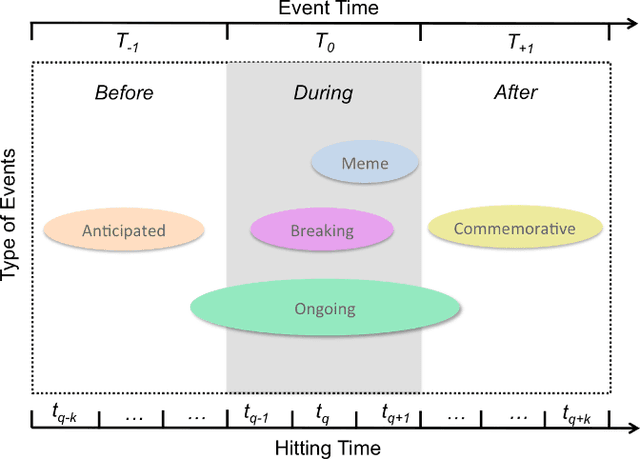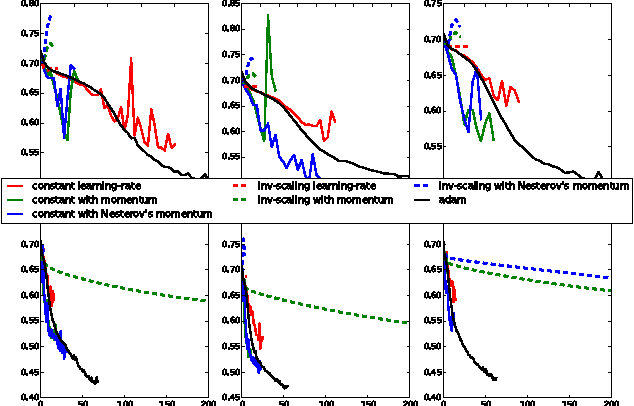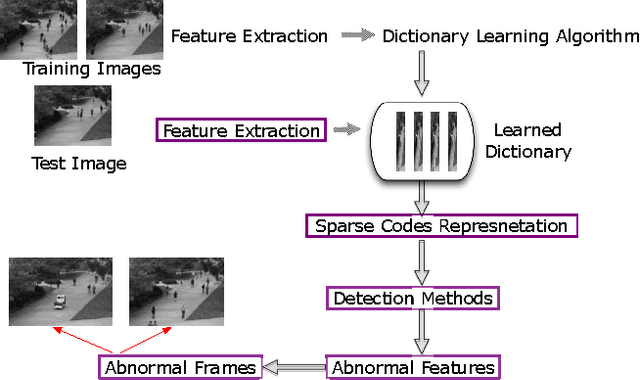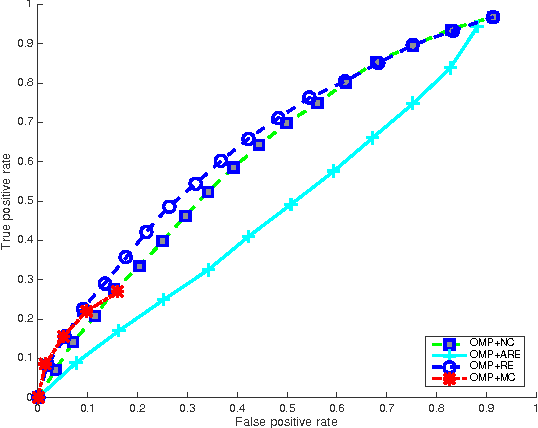Huamin Ren
Learning Dynamic Classes of Events using Stacked Multilayer Perceptron Networks
Jul 01, 2016



Abstract:People often use a web search engine to find information about events of interest, for example, sport competitions, political elections, festivals and entertainment news. In this paper, we study a problem of detecting event-related queries, which is the first step before selecting a suitable time-aware retrieval model. In general, event-related information needs can be observed in query streams through various temporal patterns of user search behavior, e.g., spiky peaks for popular events, and periodicities for repetitive events. However, it is also common that users search for non-popular events, which may not exhibit temporal variations in query streams, e.g., past events recently occurred, historical events triggered by anniversaries or similar events, and future events anticipated to happen. To address the challenge of detecting dynamic classes of events, we propose a novel deep learning model to classify a given query into a predetermined set of multiple event types. Our proposed model, a Stacked Multilayer Perceptron (S-MLP) network, consists of multilayer perceptron used as a basic learning unit. We assemble stacked units to further learn complex relationships between neutrons in successive layers. To evaluate our proposed model, we conduct experiments using real-world queries and a set of manually created ground truth. Preliminary results have shown that our proposed deep learning model outperforms the state-of-the-art classification models significantly.
A comprehensive study of sparse codes on abnormality detection
Mar 13, 2016



Abstract:Sparse representation has been applied successfully in abnormal event detection, in which the baseline is to learn a dictionary accompanied by sparse codes. While much emphasis is put on discriminative dictionary construction, there are no comparative studies of sparse codes regarding abnormality detection. We comprehensively study two types of sparse codes solutions - greedy algorithms and convex L1-norm solutions - and their impact on abnormality detection performance. We also propose our framework of combining sparse codes with different detection methods. Our comparative experiments are carried out from various angles to better understand the applicability of sparse codes, including computation time, reconstruction error, sparsity, detection accuracy, and their performance combining various detection methods. Experiments show that combining OMP codes with maximum coordinate detection could achieve state-of-the-art performance on the UCSD dataset [14].
 Add to Chrome
Add to Chrome Add to Firefox
Add to Firefox Add to Edge
Add to Edge